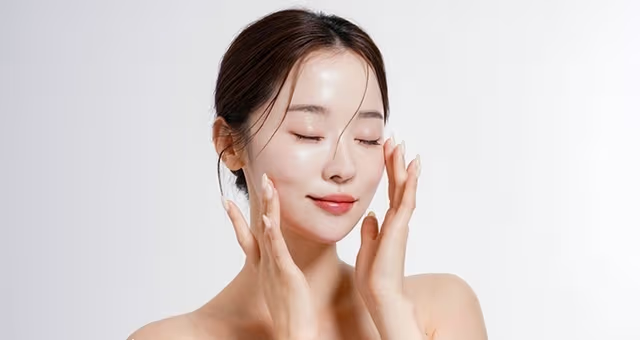Over the past decade, Korean skincare — often called K-beauty — has transformed the global beauty industry. What began as a niche curiosity from South Korea has become a worldwide phenomenon, influencing how people think about skincare routines, ingredients, and even self-care.
From glass skin to snail mucin serums, and from sheet masks to 10-step routines, Korean skincare is built on a philosophy that goes far beyond vanity. It’s about nourishing the skin, maintaining balance, and achieving long-term health rather than quick fixes.
The Philosophy Behind Korean Skincare
Unlike many Western skincare approaches that focus primarily on treating issues (like acne or aging), Korean skincare is centered on prevention, hydration, and nourishment.
At its core, the K-beauty philosophy is about respecting the skin’s natural balance. The goal isn’t to strip away oil or cover imperfections, but to build and protect the skin barrier — ensuring that skin remains hydrated, supple, and radiant over time.
Korean beauty also views skincare as a self-care ritual, not a chore. It’s a few moments of mindfulness each day — massaging in serums, gently patting in essences, or enjoying the cooling effect of a sheet mask — to connect with yourself while caring for your skin.
The Famous Korean Skincare Routine Explained
The Korean skincare routine is often described as a 10-step process, but it’s not about following rigid rules. Rather, it’s a customizable system where each step has a purpose. Here’s a breakdown of the traditional K-beauty routine and what each step does for your skin.
1. Oil Cleanser (First Cleanse)
Korean skincare emphasizes the importance of double cleansing. The first step uses an oil-based cleanser to remove sunscreen, makeup, and sebum without drying the skin. Popular ingredients include green tea oil, rice bran oil, or camellia oil.
2. Water-Based Cleanser (Second Cleanse)
The second cleanse ensures all residue is removed. A gentle foam or gel cleanser helps clean impurities and sweat while maintaining the skin’s pH balance.
3. Exfoliator
Used a few times per week, exfoliators remove dead skin cells to promote smooth, radiant skin. Korean brands favor gentle exfoliation using enzymes or mild acids like PHA or LHA, avoiding harsh scrubbing.
4. Toner
Unlike traditional Western toners that can be astringent, Korean toners are hydrating and pH-balancing. They prepare the skin to better absorb the products that follow.
5. Essence
Often called the heart of Korean skincare, essences are lightweight, hydrating liquids that deliver nutrients deep into the skin. Ingredients like fermented yeast, birch sap, and hyaluronic acid help plump and rejuvenate the skin.
6. Serum or Ampoule
These concentrated treatments target specific concerns like pigmentation, wrinkles, or acne. Korean serums often feature powerful natural ingredients like ginseng, propolis, niacinamide, or snail mucin.
7. Sheet Mask
A signature step in K-beauty, sheet masks are soaked in essence and provide intense hydration and nourishment. They are great for relaxing and giving your skin a boost before a big day.
8. Eye Cream
Korean eye creams are formulated to hydrate and protect the delicate under-eye area, often using ingredients like green tea extract, collagen, and peptides.
9. Moisturizer
Locking in all the previous layers, a good moisturizer ensures long-lasting hydration. K-beauty offers everything from light gel creams for oily skin to rich creams for dry skin.
10. Sunscreen (Morning Only)
Sunscreen is non-negotiable in Korean skincare. Koreans believe sun protection is the key to preventing aging and maintaining youthful skin. Korean sunscreens are lightweight, non-greasy, and often infused with skincare ingredients for extra nourishment.
Why Korean Skincare Works
Korean skincare isn’t just about the number of steps — it’s about formulation innovation and consistency. Here’s why it’s so effective:
1. Layering for Hydration
Instead of relying on one thick cream, K-beauty layers multiple lightweight products. This allows deeper hydration and helps the skin absorb nutrients gradually.
2. Gentle, Skin-Barrier-Friendly Formulas
Harsh treatments are replaced with soothing, low-irritant ingredients like centella asiatica (cica), green tea, and mugwort. These help repair and strengthen the skin barrier.
3. Innovative Ingredients
Korean skincare introduced the world to unique ingredients like:
- Snail Mucin: Heals scars, hydrates, and improves elasticity.
- Propolis: An antibacterial ingredient from bees that soothes and repairs.
- Ginseng: Boosts circulation and revitalizes dull skin.
- Fermented Ingredients: Improve absorption and deliver antioxidants deep into the skin.
4. Consistency and Patience
K-beauty encourages a long-term approach. It’s not about overnight results but gradual, visible improvements over weeks and months.
Popular Korean Skincare Brands to Know
The Korean skincare industry is full of innovative brands that have taken the world by storm. Here are a few must-know names:
1. Laneige
Known for its Water Sleeping Mask and Lip Sleeping Mask, Laneige focuses on hydration technology and glowy skin.
2. Innisfree
Sustainably sourced from Jeju Island, Innisfree uses green tea, volcanic clay, and other natural ingredients to purify and balance the skin.
3. COSRX
Loved for its minimalist packaging and powerful results, COSRX offers effective solutions for acne-prone and sensitive skin — especially its Snail Mucin Essence and BHA Blackhead Power Liquid.
4. Sulwhasoo
A luxury K-beauty brand combining traditional Korean herbal medicine (hanbang) with modern science. Their First Care Activating Serum is an international bestseller.
5. Dr. Jart+
A pioneer in dermatology-based K-beauty, Dr. Jart+ introduced the world to Cicapair (centella-based) and Ceramidin lines that repair the skin barrier.
6. Anua
Famous for its Heartleaf Toner, Anua focuses on gentle, mindful skincare that balances the skin’s ecosystem.
The Korean Approach to Beauty: More Than Just Skin Deep
In South Korea, skincare is a cultural ritual deeply tied to self-care and confidence. From a young age, people are taught the importance of protecting and nourishing the skin, not covering it with makeup.
This mindset has created a beauty culture that prizes natural, glowing skin — what’s known as the “glass skin” look. The emphasis is not on concealing flaws but maintaining skin so healthy that it naturally radiates light.
Additionally, skincare in Korea isn’t gender-exclusive. Both men and women participate equally, reflecting a broader cultural acceptance that taking care of one’s appearance is self-respect, not vanity.
K-Beauty’s Influence on the Global Market
Korean skincare’s influence on the global beauty industry has been revolutionary. Many global trends trace their roots back to Korea, including:
- Sheet masks and sleeping masks
- Essences and ampoules
- Cushion foundations
- Hydrating toners
- BB and CC creams
Major Western brands now take inspiration from K-beauty’s focus on hydration and gentle ingredients, proving that the Korean approach to skincare has reshaped global beauty standards.
How to Build Your Own K-Beauty Routine
If you’re new to Korean skincare, don’t feel pressured to use all 10 steps. Start simple — the beauty of K-beauty is its flexibility.
Beginner 5-Step Routine:
- Oil Cleanser
- Foam Cleanser
- Toner or Essence
- Serum or Ampoule
- Moisturizer + Sunscreen (daytime)
Once you understand your skin type, you can introduce new steps like exfoliants, eye creams, or sheet masks. Remember, consistency is more important than complexity.
The Future of Korean Skincare
As the skincare world evolves, Korean brands continue to innovate — focusing on eco-friendly packaging, vegan formulations, and science-backed ingredients.
Emerging trends include:
- Microbiome skincare, to balance skin bacteria.
- Minimalist routines, focusing on 3–5 multitasking products.
- Natural alternatives to synthetic chemicals, such as fermented botanicals.
- AI-powered skincare analysis, helping customers create personalized routines.
K-beauty is moving toward sustainability and personalization, ensuring that skincare remains both effective and ethical.
Final Thoughts
Korean skincare isn’t just a beauty routine — it’s a mindset. It’s about slowing down, understanding your skin, and nurturing it daily with intention and care.
By focusing on hydration, prevention, and balance, Korean skincare proves that true beauty isn’t about quick fixes or covering up flaws — it’s about building long-term skin health from within.
Whether you follow a full 10-step regimen or just a few key steps, adopting Korean skincare principles can transform not only your skin but also your approach to self-care.
In the end, the secret to glowing skin isn’t in the number of products you use — it’s in the consistency, gentleness, and love with which you treat your skin every day.

